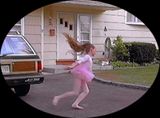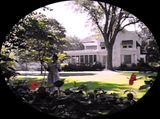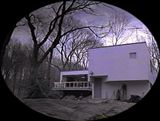|
 


|  |
Few films have dared to explore the suburban American psyche. Most of the great American films take place in dense cities, fruited plains, foreign ports, or imaginary worlds. Suburban environments simply lack realistic representation on the movie screen.
Until the 1990s, most filmmakers who entered suburbia treated it either as parody or as the springboard for an extraordinary tale.1 When a hyper Jennifer Grey karate-kicks the school principal in Ferris Bueller's Day Off, we do not take it as an accurate portrayal of suburban America. And when E.T. befriends Elliot, the film's convincing depiction of suburbia quickly disappears.
However, the 1990s represent a revolution for the "suburban" film. Independent filmmakers born and raised in the suburbs are pointing their cameras homeward. From Kevin Smith to Todd Solondz, they know the nuances of the suburbs, and most importantly, they don't need to sensationalize it with parody or fantastic plots. The characters are the story. By realistically portraying suburbanites ranging from convenience store clerks to faithful housewives, these filmmakers deliberately avoid narrative hyperbole.
Three films in particular approach a broad consensus about suburban life. Mr. & Mrs. Bridge (1990) follows the lives of a husband and wife in suburban Kansas City; The Ice Storm (1997) gives us New Canaan, Connecticut during a frigid Thanksgiving; and Welcome to the Dollhouse (1996) tells the story of Dawn, a junior high school geek toughing it out in suburban New Jersey.2 These three films suggest that beneath the ritualized lives of suburbanites lies an emotional vacuum. And at the core of the vacuum lies the nuclear family (consisting of mom, dad and two or three children). "Nuclear," according to these films, is a misnomer. The nuclear forces that are supposed to keep everyone together have dissipated, leaving a bunch of chaotic quarks that live in the same house, but never interact.
page 1 of 4
 
|